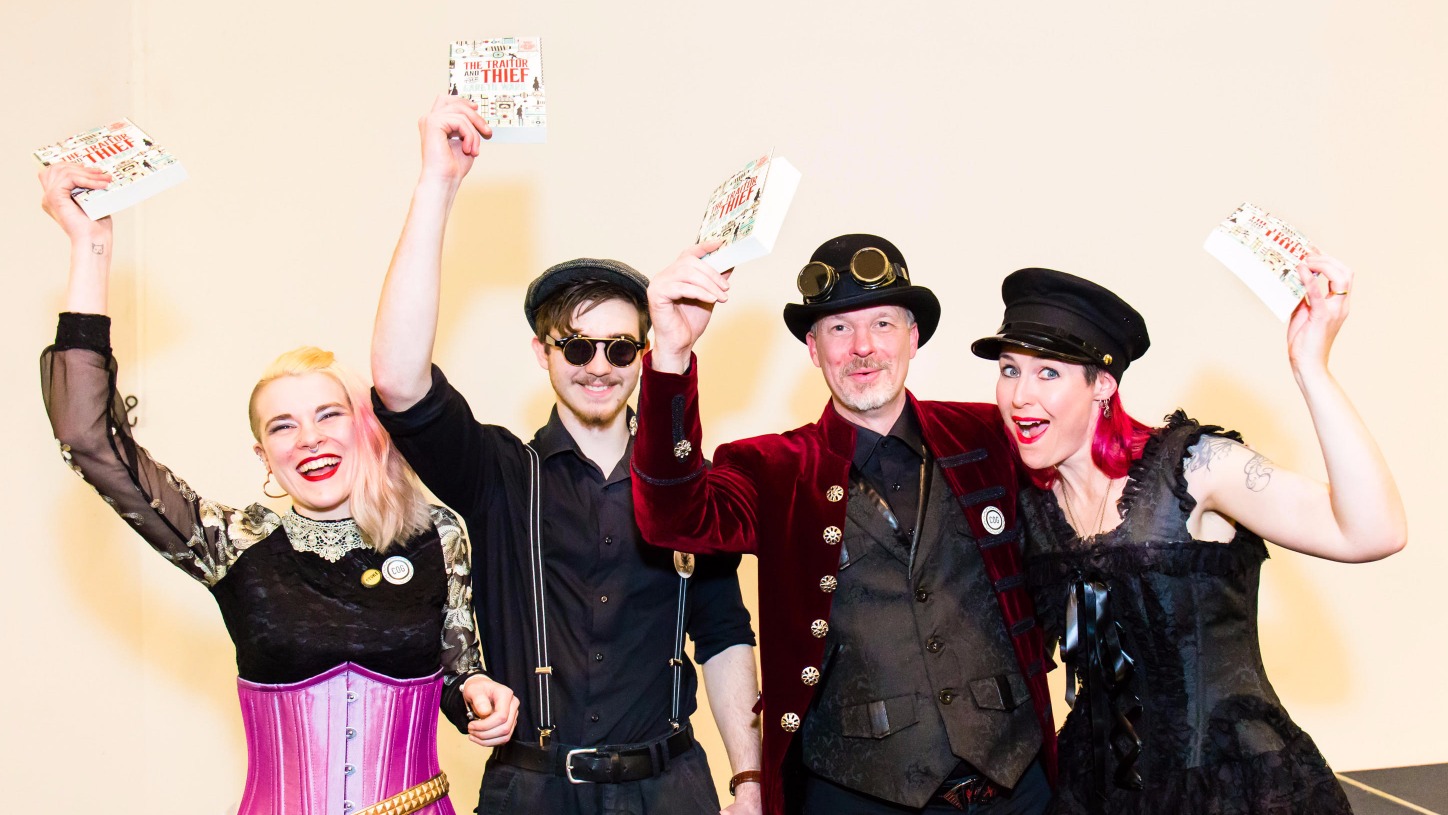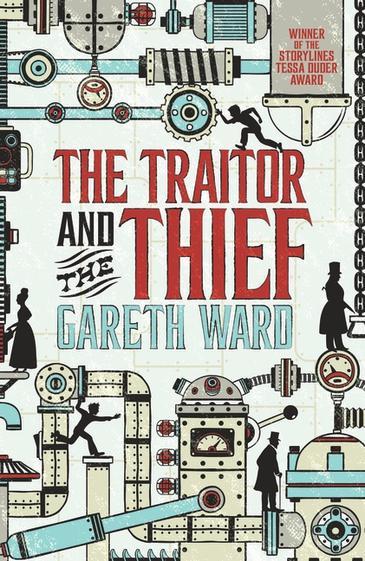Earlier this month, we treated you to an excerpt from Gareth Ward’s award-winning debut steampunk adventure novel, The Traitor and the Thief. Here’s an interview with the fascinating, hardworking author himself.

Your bio notes read like an adventure novel of their own! How do you describe yourself to people these days? For example, if someone says, ‘So, Gareth, what do you do…?’
I’ve had an interesting life: Commando, Police Officer, Magician, Hypnotist, Zombie but today I say I’m a Bookseller, because first and foremost this is how I think of myself. I am terrifically proud of The Traitor and the Thief but I’m also proud to be fighting the good fight of promoting literature in all its guises to our community.
The Traitor and the Thief got picked up for publication after it won the Storylines Tessa Duder Award in 2016. Was it as easy as that? (I imagine not!) How much time, planning, plotting and re-writing went into the book we can now buy from all good bookstores?
I’ve been writing for many years and have completed three unpublished novels before this one. Like most things in life, you must put in the practice and learn the skills. The manuscript that won the award took about ten months of writing, rewriting and editing. Then when the wonderful Walker Books got hold of it there was about another six months more of robust editing, a process during which I learned so much about my writing.

And what about the setting? There’s a mention of the River Thames in the book, but the city is called Coxford. Did you have London (or Oxford) in mind when writing the book – or is it completely invented? How did you keep track of locations, like when the main character, Sin, runs through the town having stolen a necklace, dipping in and out of alleyways and side-streets at breakneck speed? (Such a great opening chapter.)
I grew up near Oxford, so the city where the story takes place is basically Oxford. The river Thames runs through Oxford although at that point it’s locally called the Isis. I cunningly changed the name to Coxford because I wanted to make it mine. I mostly kept true to Oxford’s street names and locations, but as it was now my Coxford I was free to make changes as required. Having spent much time in Oxford and at (B)Lenheim Palace, another key location, I could clearly visualise the settings in my mind.
The technology in the book, especially the inventions of Nimrod Barm, is fascinating and really fun – the Battler Boy automatons for COG hopefuls to practise combat against; the skirts that turn into spinning blades; the healing glue for wounds. How did you come up with this stuff?
The beauty of the Steampunk genre is that you can just make stuff up. It still has to conform to the world’s internal logic but other than that my imagination runs free. I don’t know where my ideas come from. My wife, Louise, would say I live in a dream world most of the time, so I think I spend much of my time thinking about weird stuff. I believe daydreaming is a hugely underrated talent and one I should have been praised for at school, rather than being told off for gazing out of the window, Miss Russell.

It strikes me that The Traitor and the Thief could be the beginning of a series… Can you comment? (In other words: what’s next from Gareth Ward, The Author?)
I’m 40,000 words into a sequel and things aren’t getting any easier for our young hero. I guess much will depend on how well the first book does in the shops. So to anyone who reads The Traitor and the Thief and loves it, please help spread the word by reviewing on Goodreads, telling your friends, and posting on social media. I’ve also finished the first draft of a completely new Steampunk novel. I was awarded a mentorship by the New Zealand Society of Authors, so I’m working through the re-writes with guidance from the wonderful Barbara Else.
What are some books that inspire you, either in your writing or in life?
Obviously, Harry Potter. How could I not love it, being a magician? My favourite series of the moment is the wonderful Lockwood & Co by Jonathan Stroud. Wolf Hollow by Lauren Wolk was the best book I read last year, period. The Rithmatist by Brandon Sanderson had one of the best book endings I can remember. Mortal Engines by Phillip Reeve has the best opening of a book – can’t wait for the film. Oh and Sir Peter, if you’re looking for a new project, The Traitor and the Thief film rights are still available. Just saying.
Can you tell us a bit about the the dedication? (‘In memory of Lesley Ann Ward, who taught me the value of imagination.’)
It’s dedicated to my mum, who died too young. She was always an imaginative and creative person, and encouraged that in me. I think she would be proud of me.


Jane Arthur
Jane Arthur's debut children's book, Brown Bird(PRH) was published in May 2024 to widespread acclaim. Jane is co-founder of The Sapling, co-owned and managed GOOD BOOKS, a small independent bookshop in Pōneke Wellington and has twice judged the NZ Book Awards for Children and Young Adults, in 2019 and 2020. Her debut poetry collection, Craven (VUP) won the Jessie Mackay Prize for best first book of poetry at the 2020 Ockham NZ Book Awards, and her second collection, Calamities!(THWUP) was longlisted for the Mary and Peter Biggs Award for Poetry in the 2024 Ockham Awards.



